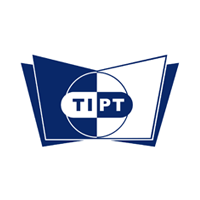
In the pharmaceutical industry, proper research and development ensures medications are safe and effective. Before landing on the market, each new drug must undergo meticulous research and testing – a multi-phase process that guarantees compliance with industry standards. From lab discovery to market authorization, this process employs highly-trained research and development professionals.
While exact procedures may vary, research and development typically adheres to standard steps that ensure maximal safety and effectiveness. For aspiring pharmaceutical professionals, learning about this process may afford a glimpse into the industry and the ins-and-outs of a rewarding career.
Are you curious about the development of new drugs? Keep reading for a quick guide on the process.
The Process Begins with Discovery and Early Development
The R&D process bridges the latest science with the needs of medical patients. Pharmaceutical companies are constantly refining their products, building upon the work of skilled lab professionals. The research behind new drugs typically begins by examining a given disease or medical problem, identifying properties that might create avenues for treatment. At this phase, researchers conduct experiments on a variety of chemical compounds, eliminating those that lack the desired effect.
Once the most promising compound is isolated – or discovered – researchers proceed to the early development stage. This in-lab testing often determines crucial characteristics for future medications, including ideal implementation, dosage and potential side effects or toxicity. R&D pharmaceutical courses prepare students to conduct such tests, assessing the viability and scale-up potential of new drugs.

Clinical Trials are Crucial for Pharmaceutical Research and Development
After delineating the compound’s properties, researchers may focus on logistical factors like ideal temperature, storage and shipment conditions. With a view to pre-clinical and clinical trials, these factors help ensure testing will occur in optimal conditions. Under close scrutiny and regulations, pre-clinical research is then conducted to confirm the compound poses no health threats before it is tested on human beings.
The clinical trials that follow are essential for effective pharmaceutical research and development. Whereas pre-clinical trials establish the basic safety of a new drug, clinical ones offer more comprehensive insights into the drug’s effects on human beings. Participants are chosen according to a study protocol, which will also define factors like trial duration, evaluation criteria and analysis procedures. Naturally, this process is also overseen – and even assisted – by official regulation bodies.
Drugs Become Available After an Official Review Process
Once clinical trials have determined the drug’s viability, oversight bodies will commence a thorough review process that may vary slightly by country and jurisdiction. In Canada, the research sponsor will file an official “New Drug Submission” with the Health Products and Food Branch (HPFB) of Health Canada, which performs similar functions to the Food and Drug Administration (FDA) in the United States. The submission includes key research information, including the drug’s benefits and side-effects.
Reviewing these documents, the HPFB will judge whether the proposed drug is truly safe and effective, basing this determination on the Food and Drugs Act. If approval is granted, a new drug will enter the market, having completed the transition from a lab discovery to an approved treatment.

Are you hoping for a rewarding pharmaceutical career? Check out some more pharmaceutical courses
Contact the Toronto Institute of Pharmaceutical Technology for details on our Pharmaceutical Research and Development Program!
